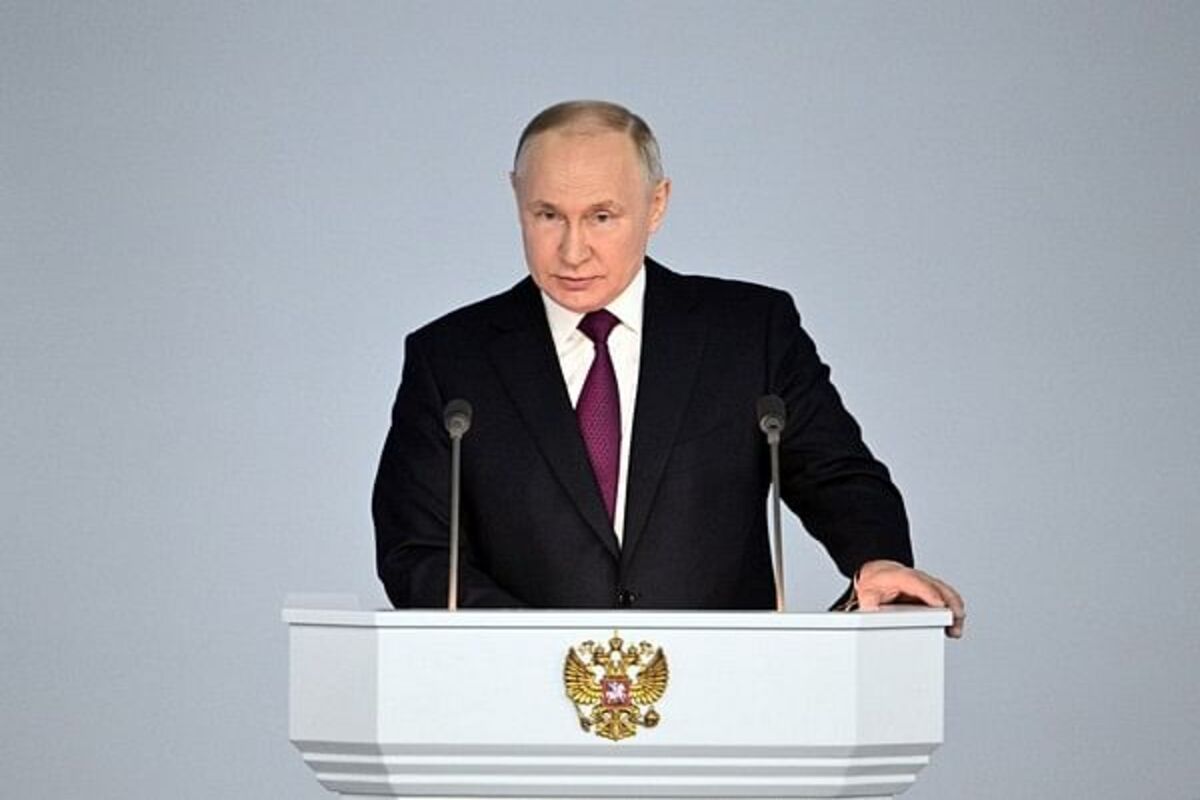Europe’s Defence
Revelations about the state of Europe’s defences are a stark reminder of the urgent need for a robust and united approach to security within NATO.
As Russia stands at the threshold of President Vladimir Putin’s re-election bid, it grapples with a nuanced economic narrative marked by both resilience and challenges.

Russian President Vladimir Putin (Image Credit: Twitter/@mfa_russia)
As Russia stands at the threshold of President Vladimir Putin’s re-election bid, it grapples with a nuanced economic narrative marked by both resilience and challenges. The successful evasion of a Western oil price cap emerges as a glimmer of hope, steering Russia away from the anticipated economic fallout following the 2022 invasion of Ukraine. In the economic playbook of Mr Putin’s Russia, the ability to circumvent Western sanctions and redirect oil exports to alternative markets, such as China and India, showcases a strategic prowess that has shielded the country from the most severe repercussions.
Despite geopolitical turbulence, energy revenues in November substantively contributed to Russia’s budget, surpassing January figures and offering a semblance of fiscal stability. Yet, beneath this veneer of economic resilience lie formidable hurdles that could shape the nation’s trajectory in the years to come. A severe labour shortage, compounded by last year’s military mobilisation and mass emigration since the Ukraine conflict, poses a critical domestic challenge.
With unemployment at a record low, sectors like IT grapple with staffing shortages, hindering overall productivity. The call for skilled workers resonates as a pressing need, and addressing this shortage becomes paramount for achieving the desired technological sovereignty. President Putin’s economic adviser, Maxim Oreshkin, underscores the necessity for attractive salaries to lure talent, acknowledging that financial incentives are pivotal in overcoming the persistent workforce deficit. The current surge in wages, particularly in manufacturing and the military, reflects a short-term solution to a recurrent challenge.
Advertisement
Russia’s economic growth may face constraints due to supplyside limitations, potentially reducing GDP growth rates from the anticipated 3 per cent to a more modest 1-2 per cent. While a contraction in 2022 gave way to a rebound, questions linger about the sustainability of this recovery, particularly in the face of looming inflation. Rising inflation, currently managed by the central bank, emerges as a potential stumbling block. With multiple rate hikes since July and another expected in December, the challenge lies in keeping inflation within manageable bounds. A 10 per cent inflation rate is plausible next year due to accelerating economic growth, wage pressures, and inflationary trends.
Despite these concerns, the inflation situation appears to be manageable for now because of the central bank’s proactive measures. While acknowledging the risks of a weak rouble, the authorities have thus far maintained a delicate balance between fiscal control and economic stability. As Russia treads the path to economic recovery and potential overheating, President Putin’s administration must manage its affairs deftly. Sustained economic growth hinges on addressing the labour shortage, managing inflation, and fostering a transition to Russian technology platforms.
Whether Mr Putin’s economic strategy can withstand these challenges remains uncertain, making the upcoming election a critical juncture that could shape Russia’s economic trajectory for years to come. Of course, there is not much discussion about the outcome of the election itself.
Advertisement